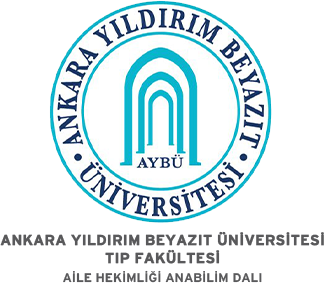Complementary and Alternative Medicine Use in Type 2 Diabetes Mellitus and its Relationship with Medication Adherence
Cemal Uyan, Tuncay Müge ALVURDepartment Of Family Medicine, Kocaeli University Faculty Of Medicine, Kocaeli, TurkeyINTRODUCTION: In this study, we aimed to investigate complementary and alternative medicine (CAM) use and its relationship with adherence to long-term medical therapy in Type 2 Diabetes Mellitus (T2DM).
METHODS: The research was designed as a descriptive study. 100 (a hundred) patients who were using oral antidiabetic for at least one year were included in the study. A questionnaire to determine sociodemographic characteristics and CAM use and a six-item Turkish Modified Morisky Scale for the measure of medication adherence were applied to the participants.
RESULTS: 55% of patients (n=55) used at least one CAM practice. The most commonly used practice was herbal medicine [80% (n = 44)]. The main reasons for using CAM were to relieve complaints and support their conventional treatment, and 85.5% (n=47) of patients did not consult their physicians about the use of these practices. There was no statistically significant relationship between CAM use and medication adherence.
DISCUSSION AND CONCLUSION: The fact that patients do not consult a doctor while using CAM shows that we need to be careful about toxicities and dose insufficiency due to drug-herb interactions. Physicians should effectively investigate the use of these therapies in addition to the drug history of their patients. Therefore, all physicians should have at least basic knowledge of CAM and learn how to access evidence-based information about these practices.
Tip 2 Diabetes Mellitusta Tamamlayıcı Alternatif Tıp Kullanımı ve Tedavi Uyumu ile İlişkisi
Cemal Uyan, Tuncay Müge ALVURKocaeli Üniversitesi Tıp Fakültesi, Aile Hekimliği Ana Bilim Dalı, KocaeliGİRİŞ ve AMAÇ: Bu çalışmada, Tip 2 Diabetes Mellitusta (T2DM) tamamlayıcı ve alternatif tıp (TAT) kullanımını ve bunun uzun süreli medikal tedaviye uyum ile ilişkisini araştırmayı amaçladık.
YÖNTEM ve GEREÇLER: Araştırma, tanımlayıcı tipte bir çalışma olarak tasarlandı. En az 1 yıldır oral antidiyabetik kullanan 100 hasta çalışmaya dahil edildi. Katılımcılara, sosyodemografik özellikleri ve TAT kullanımını sorgulayan bir anket; tedaviye uyumu ölçmek için 6 soruluk Türkçe Modifiye Morisky Ölçeği uygulandı.
BULGULAR: Hastaların %55i en az bir TAT yöntemi kullanmıştı. En sık kullanılan yöntem bitkisel ilaçlar (%80(n=44)) idi. TAT yöntemleri başlıca, şikayetleri azaltmak ve tedaviyi destekleyici amaçlı kullanılmış ve hastaların %85,5i (n=47) bu yöntemlerin kullanımı konusunda doktora danışmamıştı. Bu hastaların %89,4ü (n=42) danışmama nedenini, doktorun olumsuz tepkisinden çekinme olarak belirtti. TAT kullanımı ile tedaviye uyum arasında istatistiksel olarak anlamlı ilişki bulunmadı.
TARTIŞMA ve SONUÇ: Hastaların TAT yöntemlerini kullanırken doktora danışmamaları, ilaç-bitki etkileşimlerine bağlı toksikasyonlara ve doz yetersizliklerine karşı dikkatli olmamız gerektiğini göstermektedir. Hekimler hastalarının ilaç öyküsü yanında bu yöntemlerin kullanımını da etkin bir şekilde sorgulamalıdır. Bu bağlamda, tüm hekimler TAT yöntemleri hakkında temel bilgiye sahip olmalı ve bu tedaviler hakkında kanıta dayalı bilgiye nasıl ulaşılabileceklerini de öğrenmelidir.
Corresponding Author: Cemal Uyan, Türkiye
Manuscript Language: English
(740 downloaded)





